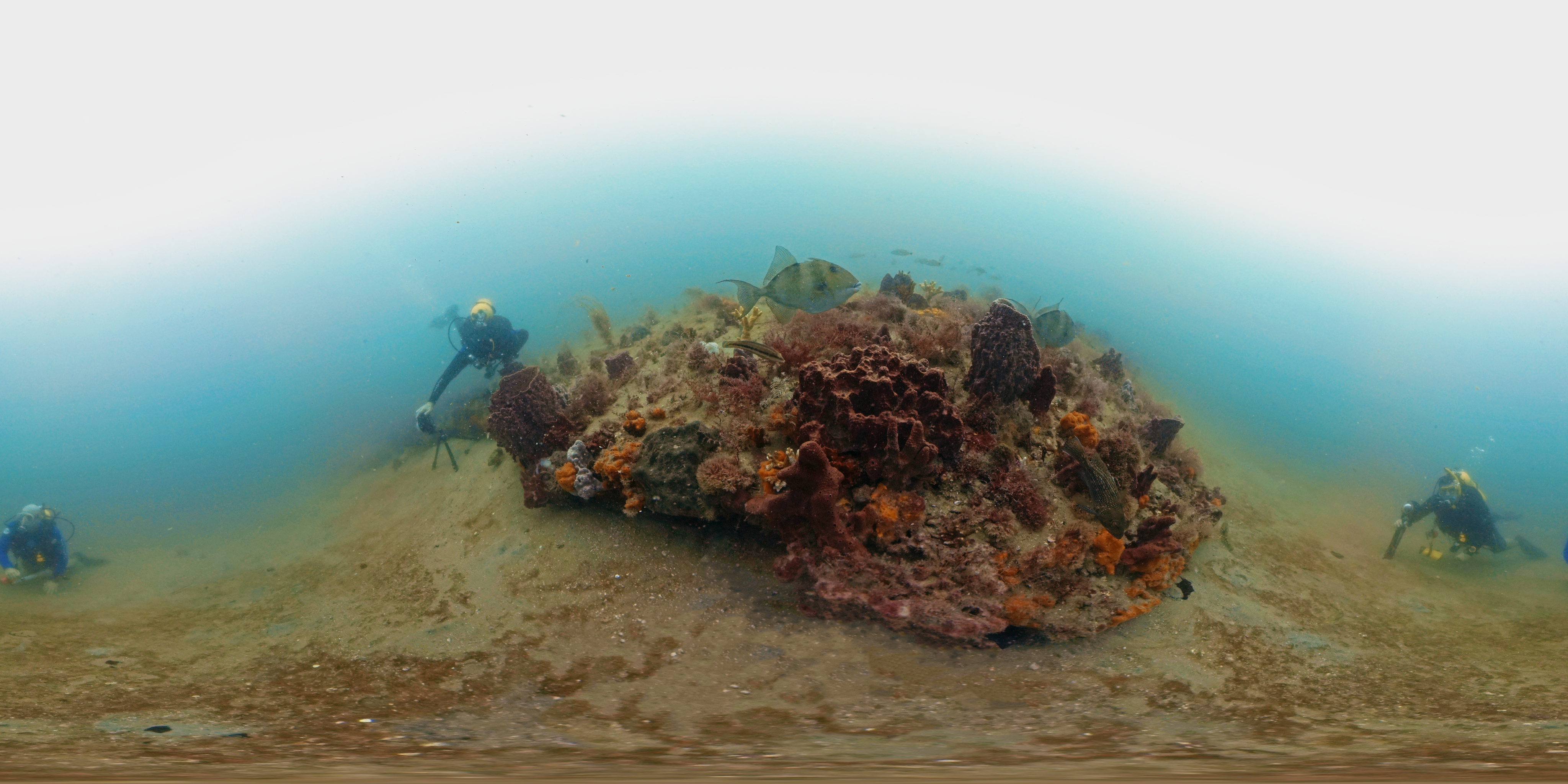Go Scuba Diving in a Marine Sanctuary—Without Leaving Your Desk
By David Samuel Shiffman
With new 360-degree images, optimized for virtual reality, more people can experience the United States' underwater treasures.
November 13, 2017
Macroscope Biology Communications Environment Technology Ecology Nature Conservation Oceanography
National Marine Sanctuaries represent some of the United States’ greatest underwater treasures. These sanctuaries protect cultural and natural resources from exploitation or destruction, while still allowing people to enjoy and benefit from these underwater areas. Thanks to a new series of virtual reality optimized 360-degree images released by the U.S. National Oceanic and Atmospheric Administration’s (NOAA) Office of National Marine Sanctuaries, anyone can experience what it’s like to dive in these amazing places without having to travel.
An important part of the mission of the Office of National Marine Sanctuaries is to convey the value of these sites to Americans, including some that are difficult to reach. “We face the ongoing challenge of showcasing the underwater wonders of national marine sanctuaries, especially when such a small percentage of the population are able to scuba dive and see these treasures for themselves,” says Chiara Zuccarino-Crowe, the Tourism and Recreation Coordinator for the Office of Marine Sanctuaries. “We need to make these sites visible where more and more people are regularly focusing their attention—online! To that end, the goal of the Sanctuary Virtual Dive Gallery is to increase awareness of the resources protected within National Marine Sanctuaries in a way that can spark public excitement. “
Currently, website visitors can experience a virtual scuba dive in 360 degrees in any of five National Marine Sanctuaries. Generating these videos required specialized technology and photography techniques, in partnership with a nonprofit called the Ocean Agency. “Creating a virtual dive begins with a certified NOAA diver equipped with a camera, complete with a super wide-angle fisheye lens (7.5 millimeters to be exact) protected within an underwater housing,” says Mitchell Tartt, the Conservation Science Division Chief in the Office of National Marine Sanctuaries. “This camera is mounted on a tripod with a customized bracket that holds the camera in position at a slightly upward tilt and that allows the camera to rotate around a specific focal point in 60-degree increments. The diver then takes a series of six photos, with each one spaced by 60 degrees to allow for complete coverage of a 360-degree sphere around a single point, except for a small area at the base of the tripod. The six photos are then “stitched” together with a special computer software to make a seamless panorama of the dive site.”
Steve Lonhart/NOAA in collaboration with The Ocean Agency
Tartt notes that while you can view the 360-degree images on your computer and view the whole area by simply moving your mouse cursor, the experience is even better on a smart phone. “The mobile-friendly viewing incorporates the gyroscope on a smart phone to automatically move through the image as you rotate your phone,” he says. “For an extra immersive experience on a smart phone, the image can be shown in stereo, and when coupled with a set of goggles or virtual reality headset, it feels like you are truly getting a diver’s eye view of a sanctuary!” [Author’s note: I was present at an event where this viewing experience was demonstrated, and a room full of marine scientists, conservationists, and educators gasped all at once.]
Environmentalists who advocate for marine protected areas are pleased with the goals of this project. “For a lot of folks, the opportunity to visit a national marine sanctuary doesn’t exist. The extreme example is the Papahanaumokuakea Marine National Monument in the Northwest Hawaiian Islands, which is visited by only a handful of people each year, mostly scientists and cultural practitioners,” said Angelo Villagomez, an Officer with Pew Bertarelli Ocean Legacy. “Virtual reality allows managers and conservationists to bring the protected area to the people, which is fantastic when you consider that you can’t bring everybody to the protected area. They will show the general public what a healthy ocean should look like.”
The Office of National Marine Sanctuaries hopes that this project will allow Americans to learn about these underwater treasures, as well as inspire people to help conserve them. “These 360-degree views of sanctuaries are a great way to visualize the issues affecting these special places,” Zuccarino-Crowe says. “For example, conceptually knowing that warming waters threaten coral reef health is one thing; but immersing yourself in the middle of a reef, where you can “dive in” within seconds to look around and see bleached coral all around you, paints a more tangible picture of what that threat actually means. This understanding is especially profound when you can fast-forward to check on that dive site’s condition—whether it demonstrates recovery or a coral colony’s demise—at the click of a button.”

American Scientist Comments and Discussion
To discuss our articles or comment on them, please share them and tag American Scientist on social media platforms. Here are links to our profiles on Twitter, Facebook, and LinkedIn.
If we re-share your post, we will moderate comments/discussion following our comments policy.